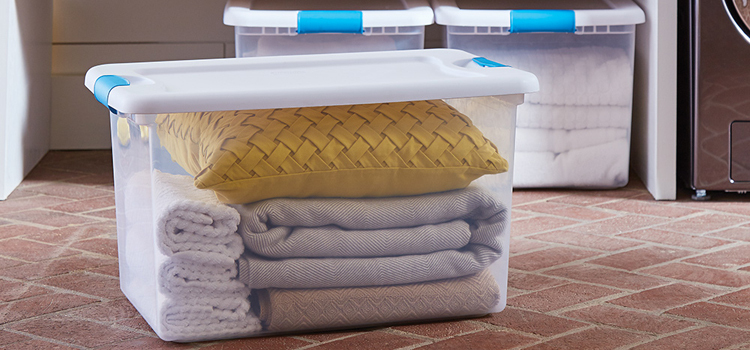How to Safely Store Comforters and Blankets in Self Storage
When seasonal transitions arise, many people find themselves needing extra space to store bulky items like comforters and blankets. While
self-storage units present a practical solution, improper storage can lead to damage and deterioration of these essential items. To ensure that your comforters and blankets remain in pristine condition until you're ready to use them again, it's crucial to follow a systematic approach to storage. This article will outline best practices for safely storing your comforters and blankets in self-storage.
1. Preparation Before Storing
Before placing your comforters and blankets in storage, it’s essential to prepare them properly to maximize their lifespan. Here are key steps to follow:
Cleaning: Always clean your comforters and blankets before storing them. Dust, dirt, and food particles can lead to mold and mildew when placed in a dark and humid environment. Check the care labels to determine the best washing method.
Drying: Ensure that your items are completely dry before packing. Even slightly damp fabric can foster mold growth during storage. Use a dryer on a low heat setting or allow them to air dry thoroughly.
Inspecting: Take the time to inspect your comforters and blankets for any rips, tears, or signs of wear. Repair any damage before storage to ensure they remain usable when you retrieve them later.
2. Choosing the Right Storage Materials
What you use to store your comforters and blankets is just as important as how you prepare them. Here’s what to consider:
Storage Bags: Invest in breathable storage bags made from cotton or fabric. Avoid plastic bags, which can trap moisture and lead to mildew.
Boxes: If you prefer to use boxes, choose options made from sturdy, acid-free materials. This will protect your linens from pests and environmental factors.
Vacuum-Sealed Bags: For space-saving solutions, vacuum-sealed bags can be an excellent choice. They compress your comforters and blankets, reducing their size significantly. However, ensure that the fabrics are clean and dry to prevent mildew.
3. Organization and Packing Techniques
Proper packing and organization are vital for maintaining your comforters’ and blankets’ integrity. Here are some effective methods:
Folding: Neatly fold your items, avoiding over-stuffing. Store like items together for ease of access. You may choose to roll them into tight cylinders rather than fold, as this can reduce creasing.
Layering: If using a storage bag or box, layer heavier items at the bottom and lighter items on the top. This helps avoid crushing delicate fabrics.
Labeling: Clearly label each bag or box with its contents and the date of storage. This makes it easier to retrieve specific items without opening them all.
The environment in which you store your comforters and blankets can significantly influence their condition. Consider the following factors when selecting a storage unit:
Climate-Controlled Units: Opting for a climate-controlled storage unit is highly recommended for storing textiles. Such units maintain a consistent temperature and humidity level, reducing the risk of mold and mildew.
Security: Select a facility with robust security measures, such as gated access, surveillance cameras, and on-site management, to ensure the safety of your belongings.
Accessibility: Choose a location that is easily accessible, allowing you to check on your items or retrieve them when needed without hassle.
5. Final Checks and Maintenance
Before and during your storage period, it's wise to perform occasional checks. Here’s how:
Inspection Visits: Make periodic visits to your storage unit to check for any signs of moisture or pests. This will enable you to take action promptly if any issues arise.
Rotating Storage: If you store multiple comforters and blankets, consider rotating them occasionally. This prevents any single item from being subjected to prolonged pressure and maintains airflow.
Refreshing Items: When you retrieve your comforters and blankets from storage, consider giving them a wash or airing them out to restore freshness before use.
Conclusion
Storing comforters and blankets safely in self-storage requires attentive preparation, proper materials, organized packing methods, a suitable unit, and ongoing maintenance. By following these best practices, you can ensure that your linens remain clean, dry, and ready for use at a moment’s notice. Effective storage not only prolongs the lifespan of your comfort items but also saves you from potential replacements and the associated costs. Remember, a well-organized storage strategy today will yield cozy comforts tomorrow.
